Sculptures to honour 'forgotten' women of shipyards
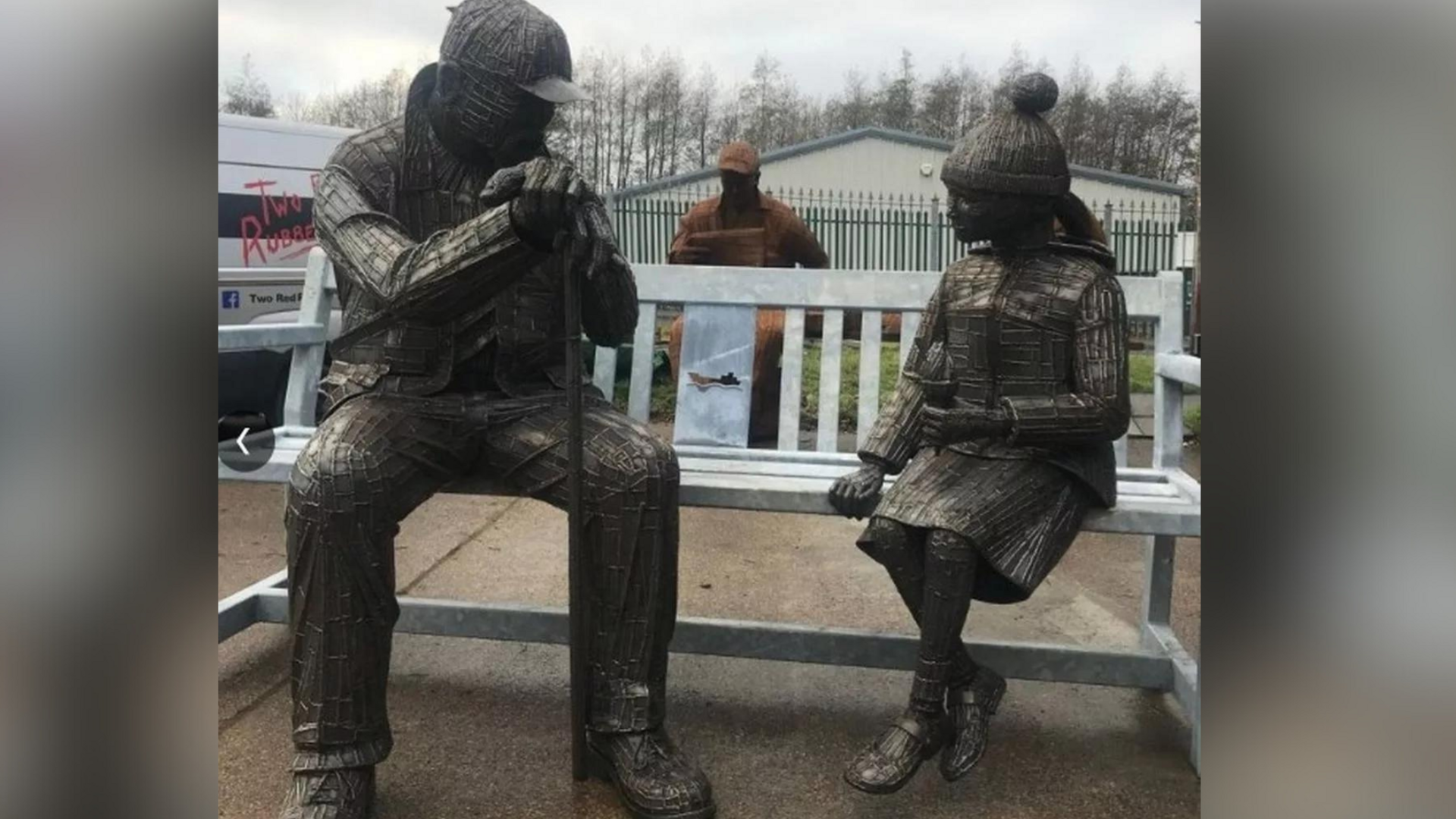
Ray Lonsdale has created two new works of art for installation in Sunderland
- Published
The "forgotten" role women played in a city's once bustling shipyards will be honoured in a series of steel sculptures.
Artists Ray Lonsdale and Ron Lawson have chiselled three large metal pieces which are set to be placed along the riverside in Sunderland.
The models, which have already been cast and are being stored in a warehouse, will be installed later this year if planning permission is approved.
Sunderland City Council leader Michael Mordey said he hoped the installations would continue to "encapsulate the city's rich industrial heritage".
The industry first arrived on Wearside in the 1300s when Thomas Menvill built the area's first shipyard in Hendon.
By the 1970s more than 7,500 people worked in Sunderland shipyards, until the closure of the last site in 1988.
However, the part women played working on the banks of the River Wear is not well-recognised, experts say.
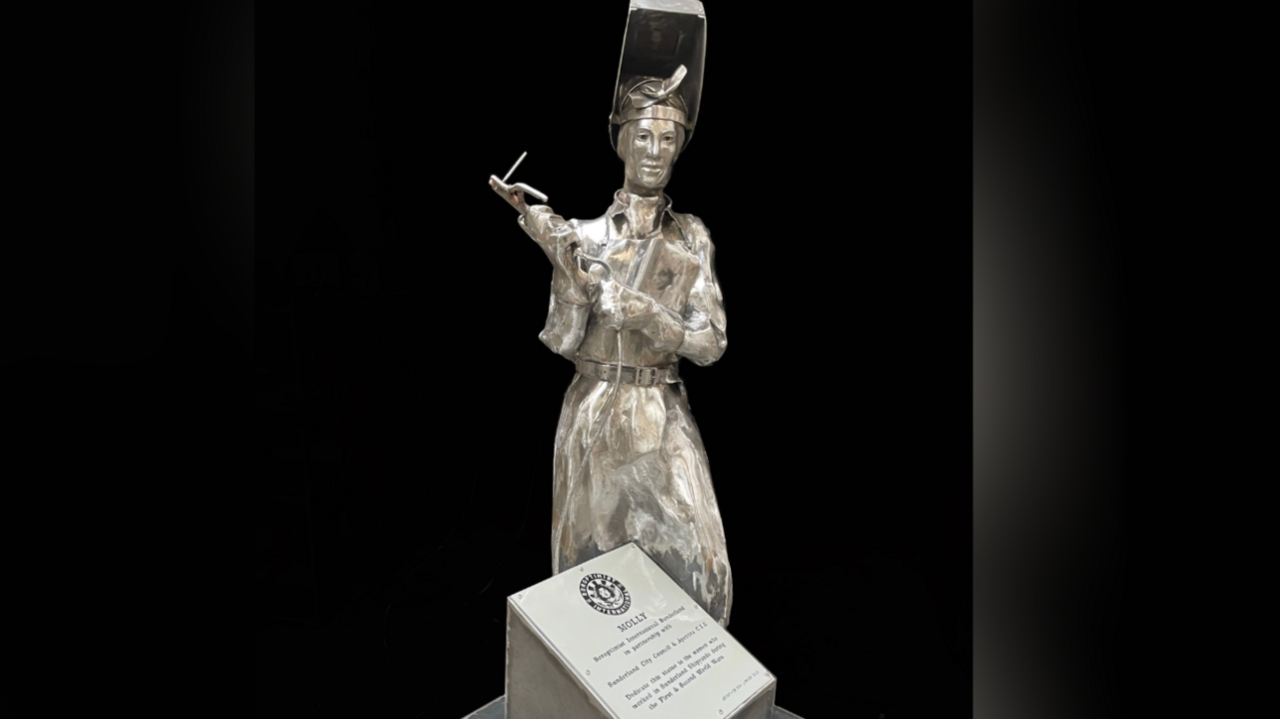
The Sunderland Soroptimists say Molly will help remember the "forgotten" role women played in the city
Mr Lawson was commissioned by the Sunderland Soroptimists - a group which supports women - and the council to build a sculpture in tribute to female workers.
He created Molly, which is designed to look life-like, and remember the more than 700 women who worked in often harsh conditions.
"I'm very proud of my Sunderland heritage and I feel really connected to the subject and the place," said Mr Lawson said.
"The sculpture is a life-size representation of a female welder wearing the personal protective equipment of the period, and she herself is made from forged and welded steel, which is rather appropriate."

Ray Lonsdale has created sculptures which remembers Sunderland's shipbuilding history
Two further sculptures honouring the city's shipbuilding history have been designed by Mr Lonsdale - who created the Gan Canny sculpture, a representation of Vaux Brewery's dray horses at Keel Square.
One forms two male workers during a lunch break towards the end of the city's shipbuilding period.
The second represents a young girl sat with her grandfather who is telling her stories from his time at the shipyards, after they were closed.
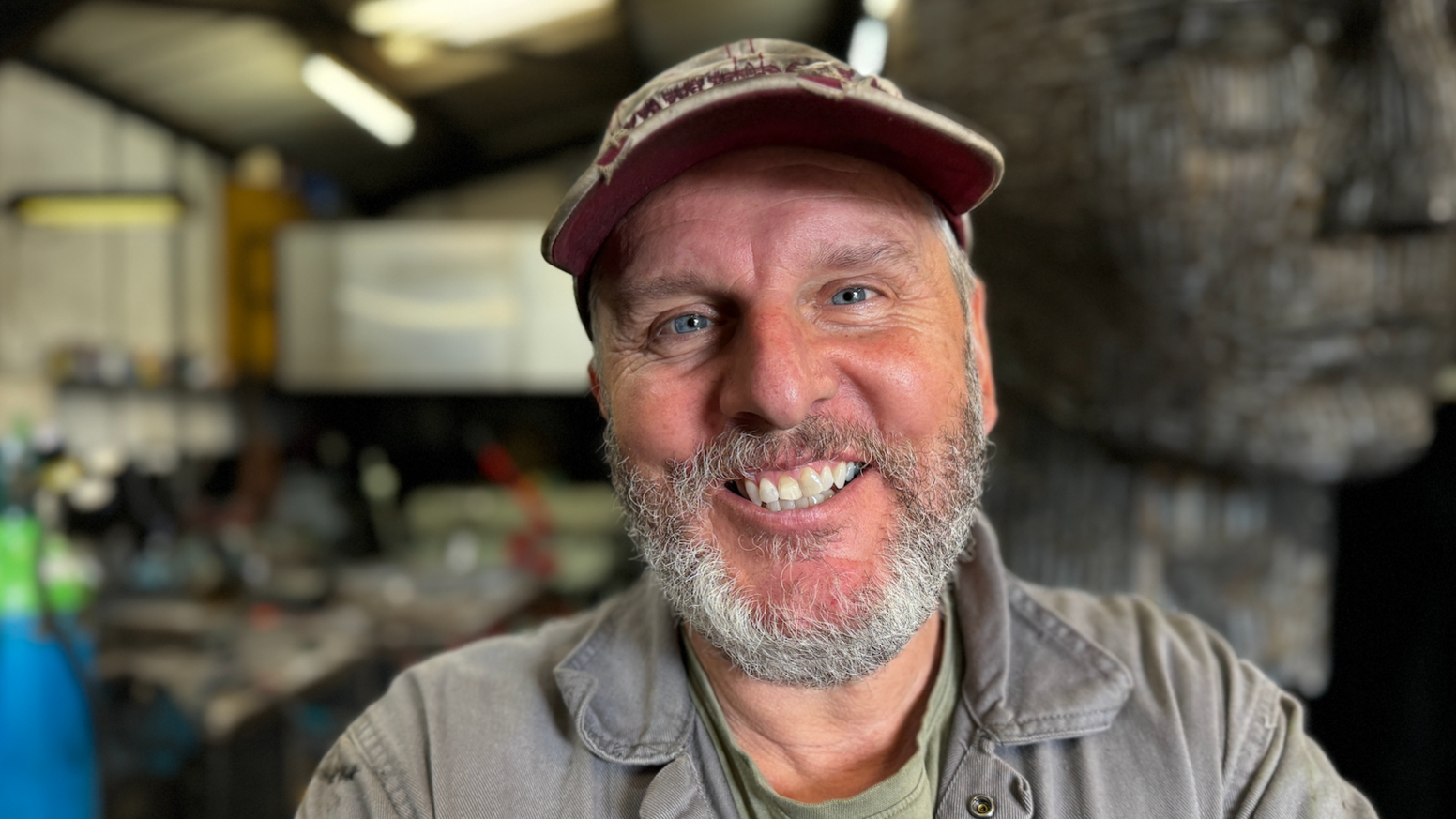
Ray Lonsdale says he hopes people will look beyond the aesthetic and learn the story of the sculptures
Mr Lonsdale, who runs a workshop in South Hetton, County Durham, said both sculptures honour the past and present.
He said: “There's five or six hundred years of history on the River Wear and that suddenly stopped.
"It's more than worthy of being remembered, the pits and the heavy industry is remembered so the shipyard [industry] is very worthy of that."
His father had also worked in the city’s shipyards.
Speaking about the sculptures, Mr Lonsdale added he hoped "people would pick up on the story of them rather than the aesthetic, and enjoy them".
Sunderland Council is due to decide on the plans later this year.
Follow BBC Sunderland on X (formerly Twitter), external, Facebook, external and Instagram, external. Send your story ideas to northeastandcumbria@bbc.co.uk.
Related topics
- Published9 January 2024
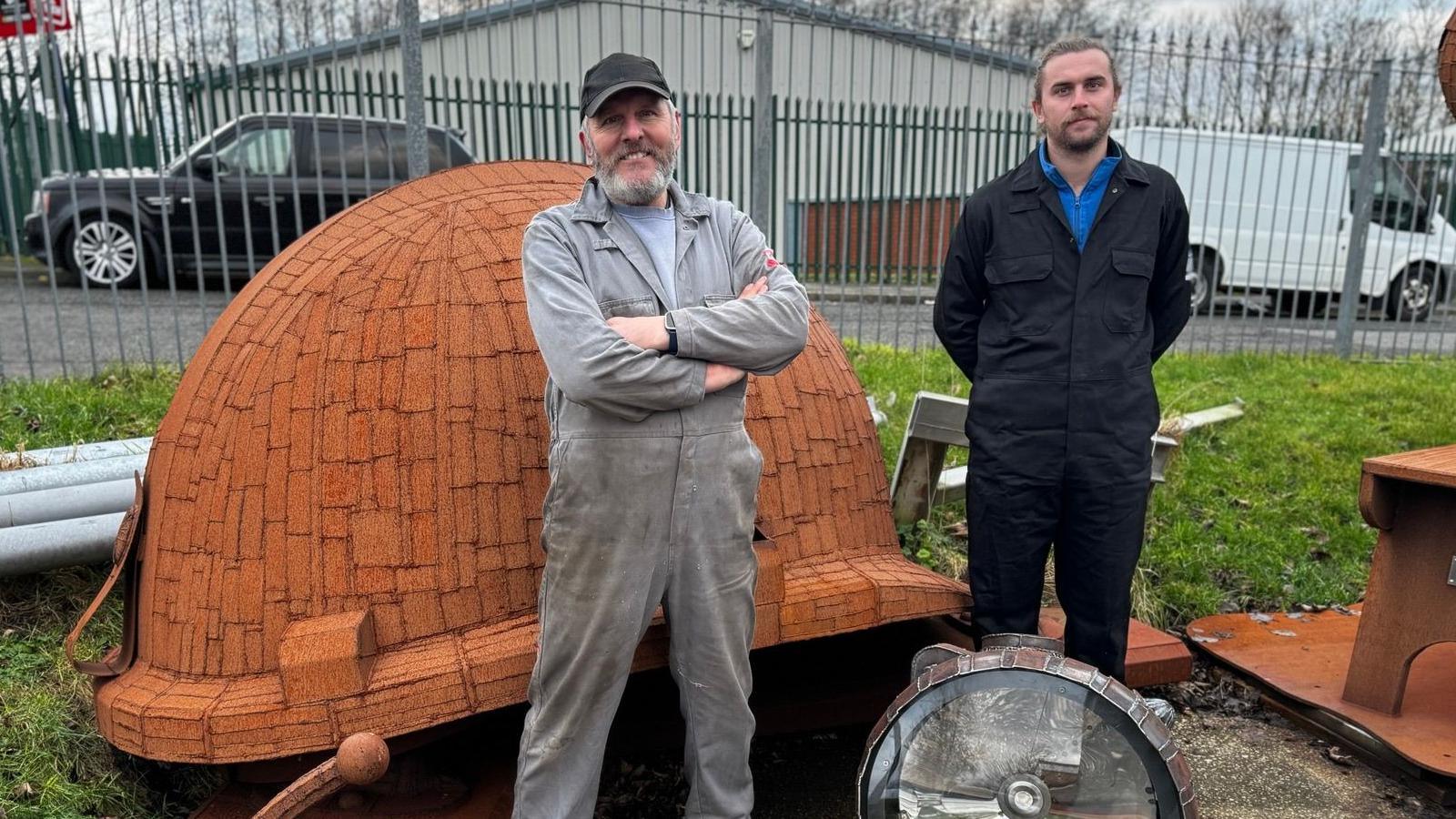
- Published3 November 2021
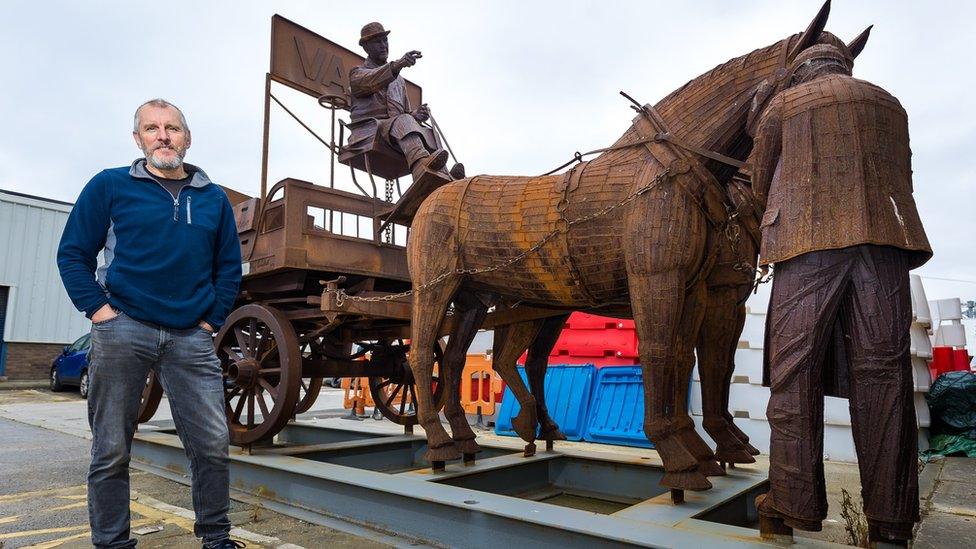
- Published26 July 2014